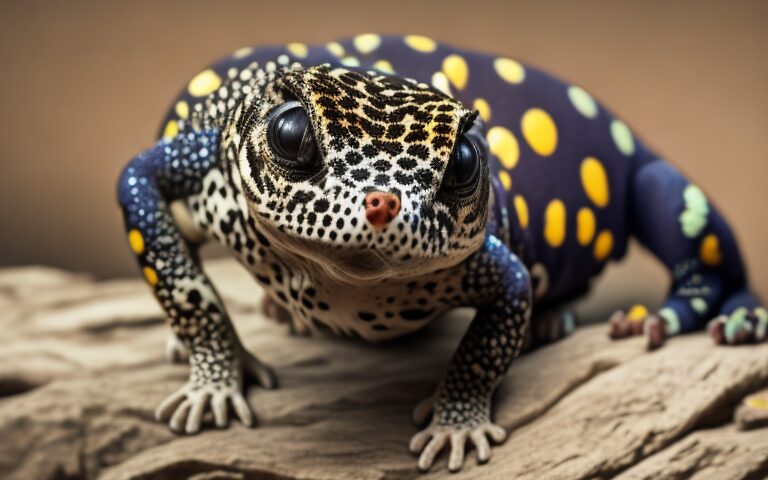If you are a reptile enthusiast or a gecko lover, you might have come across the stunning black leopard gecko. With their unique coloring and captivating pattern, these geckos have become a topic of interest for many. But are black leopard geckos truly rare? Let’s explore the world of these remarkable creatures and discover the truth behind their rarity.## Understanding the Black Leopard Gecko
The black leopard gecko is a fascinating morph or variation of the common leopard gecko (Eublepharis macularius). While the common leopard gecko exhibits a speckled and spotted pattern in various colors, the black leopard gecko showcases a uniform dark coloration.
The black leopard gecko, also known as the melanistic leopard gecko, is a captivating creature that captures the attention of reptile enthusiasts worldwide. Its striking appearance and unique characteristics make it a highly sought-after pet among reptile keepers.

Defining the Black Leopard Gecko
The black leopard gecko is primarily known for its jet black skin coloration. This unique trait encompasses the entire body, making it appear as if the gecko is adorned in a sleek black coat. While some black leopard geckos may have a few white spots, the overall coloration remains predominantly dark.
Aside from its black color, the black leopard gecko shares many similarities with its common leopard gecko counterpart. It has a stout body, with a triangular-shaped head and large, lidless eyes. Its tail is thick and tapering, serving as a fat storage reserve for times of scarcity. These geckos are also equipped with adhesive toe pads, allowing them to effortlessly climb various surfaces.
The Genetics Behind the Black Leopard Gecko
The black leopard gecko’s stunning appearance is the result of specific genetic mutations. These mutations affect the pigmentation and pattern genes, leading to the distinct black coloration. Breeders carefully select and pair geckos with these genetic traits to produce black leopard geckos.
One of the primary genetic factors responsible for the black coloration is the presence of the melanin pigment. Melanin is responsible for the dark pigmentation found in various animals, including humans. In the case of black leopard geckos, an increased production of melanin results in their striking black color.
Another genetic factor that contributes to the black leopard gecko’s appearance is the suppression of other color pigments. While the common leopard gecko displays a range of colors, such as yellow, orange, and brown, the black leopard gecko’s genetic makeup suppresses these pigments, resulting in a uniform black hue.
Through selective breeding, reptile enthusiasts and breeders have been able to enhance and refine the genetic traits responsible for the black leopard gecko’s appearance. This process involves carefully pairing geckos with desirable traits, such as intense black coloration and minimal white spotting, to produce offspring that exhibit these characteristics.
In conclusion, the black leopard gecko is a captivating and visually stunning variation of the common leopard gecko. Its jet black coloration and unique genetic traits make it a highly sought-after pet among reptile enthusiasts. Understanding the genetics behind its appearance adds to the fascination and appreciation for this remarkable creature.
Rarity of Black Leopard Geckos in the Wild
While black leopard geckos have gained popularity in the reptile community, their presence in the wild is relatively scarce. Let’s delve into the factors that contribute to their rarity.
Black leopard geckos, scientifically known as Eublepharis macularius, are fascinating creatures that have captivated the hearts of reptile enthusiasts around the world. Their unique appearance, with a striking black coloration, sets them apart from their more common counterparts. However, despite their popularity in captivity, finding black leopard geckos in their natural habitat is like searching for a needle in a haystack.
Habitats of Black Leopard Geckos
Black leopard geckos are native to certain regions of Afghanistan, Pakistan, and India. These areas are characterized by harsh and unforgiving environments, where survival is a constant struggle. Within these regions, black leopard geckos can be found in rocky desert areas and arid grasslands, where they can find suitable shelters and a sustainable food source.
These geckos have adapted to thrive in the arid conditions of their habitats. Their unique physiology allows them to conserve water and withstand extreme temperatures, making them well-suited to survive in the scorching heat of the desert. Their ability to blend into their surroundings, thanks to their black coloration, provides them with an advantage when it comes to hunting and avoiding predators.
However, even within their natural habitats, black leopard geckos are not commonly found. Their elusive nature and exceptional camouflage make them difficult to spot, even for experienced herpetologists. This scarcity adds to their allure and makes encountering one in the wild a truly special and memorable experience.
Population Estimates and Conservation Status
Black leopard geckos are considered rare due to their limited population. While precise estimations are challenging, conservationists believe that their numbers in the wild are relatively low. The exact reasons for their rarity are still not fully understood, but factors such as habitat loss, climate change, and illegal collection for the pet trade may contribute to their declining numbers.
The International Union for Conservation of Nature (IUCN) does not have a specific conservation status for the black leopard gecko. However, their rarity emphasizes the importance of protecting their natural habitats and implementing conservation measures to ensure their long-term survival.
Efforts are being made by various organizations and researchers to study and monitor black leopard gecko populations in the wild. By understanding their ecology, behavior, and habitat requirements, conservationists can develop effective strategies to safeguard these remarkable creatures and their fragile ecosystems.
In conclusion, the rarity of black leopard geckos in the wild is a testament to their remarkable adaptability and the challenges they face in their natural habitats. As reptile enthusiasts, it is our responsibility to appreciate these creatures and support conservation efforts that aim to protect their future.
Breeding Black Leopard Geckos
Due to their captivating appearance, many reptile enthusiasts and breeders aim to produce black leopard geckos through controlled breeding programs. Let’s explore the process and challenges associated with breeding these remarkable geckos.
Black leopard geckos, also known as melanistic leopard geckos, are a sought-after morph in the reptile world. Their dark coloration, ranging from deep charcoal to jet black, sets them apart from the more common leopard gecko color variations. Breeding these geckos requires a thorough understanding of their genetics and careful selection of breeding pairs to achieve the desired traits.
Breeding Process and Challenges
The breeding process for black leopard geckos involves selecting geckos with the black coloration and pairing them to produce offspring that exhibit the same trait. Breeders carefully examine the lineage and genetic makeup of potential breeding pairs to ensure the best chances of producing black offspring. This involves studying the geckos’ family history, looking for any patterns of black coloration in previous generations.
However, breeding black leopard geckos is not without its challenges. Genetic abnormalities and health issues can arise, making it crucial for breeders to practice responsible breeding. Some black leopard geckos may carry recessive genes that can lead to health problems in their offspring. To mitigate this risk, breeders need to monitor the health of their breeding stock and avoid pairing geckos with known genetic issues.
Additionally, the breeding process itself can be demanding. Female geckos need to be in optimal health and condition to produce viable eggs. Breeders must provide them with a suitable environment, including proper temperature and humidity levels, to ensure successful breeding. Male geckos, on the other hand, need to be sexually mature and capable of mating with the females.
Impact of Selective Breeding on Rarity
The popularity of black leopard geckos in the reptile community has significantly increased their captive population. Selective breeding efforts have successfully produced more of these stunning creatures, making them more accessible to enthusiasts. This increased availability has allowed more people to appreciate and enjoy the unique beauty of black leopard geckos.
However, it is crucial to maintain a delicate balance to preserve the authenticity and genetic diversity of these geckos. As breeders focus on producing black leopard geckos, there is a risk of reducing the genetic variability within the population. This can lead to potential health issues and decrease the overall resilience of the species. Responsible breeders work to avoid this by implementing breeding programs that prioritize genetic diversity and the overall well-being of the geckos.
In conclusion, breeding black leopard geckos requires a combination of knowledge, dedication, and responsible practices. By understanding their genetics and carefully selecting breeding pairs, breeders can produce offspring with the desired black coloration. However, it is essential to be mindful of the potential challenges and the impact of selective breeding on the rarity and genetic diversity of these captivating geckos.
Black Leopard Geckos as Pets
If you’re a reptile enthusiast seeking to elevate your collection with an exquisite and visually striking gecko, look no further than the black leopard gecko. This captivating gecko variety is a true gem in the realm of exotic pets. In this article, we’ll delve into the availability of black leopard geckos in the pet trade and provide essential care tips for these unique creatures.
Availability in the Pet Trade
The allure of the black leopard gecko is undeniable, with its striking appearance and unique charm. These geckos, while rare, can sometimes be found in the pet trade, thanks to the efforts of dedicated breeders who prioritize their health and vibrancy.
For those eager to welcome a black leopard gecko into their home, the hunt can be both exciting and challenging. Due to their rarity and the high demand for these exquisite creatures, locating one might require a bit of patience and perseverance. However, the reward of having such a remarkable gecko in your collection makes the search well worth it.
The Exclusive Offer for GeckoWhiz Readers
If you’re ready to embark on the journey of bringing a black leopard gecko into your life, we have an exclusive offer for you. Our friends at TheGeckopia offer a selection of exceptional black leopard geckos, including some of the rarer variations. As a special treat for GeckoWhiz readers, you can use the code “GeckoWhiz” during your purchase to enjoy a 5% discount on your order. It’s an opportunity you wouldn’t want to miss!
Care and Maintenance of Black Leopard Geckos
Providing proper care for black leopard geckos is essential to ensure their well-being and longevity. These geckos have similar care requirements to common leopard geckos, including appropriate enclosures, temperature, humidity, and a balanced diet. Creating a comfortable and stimulating environment is crucial for their overall health and happiness.
Protecting the Black Leopard Gecko
As with any rare and unique creature, it is crucial to protect the black leopard gecko and its natural habitats. Let’s explore the conservation efforts and legal protections in place.
Conservation Efforts and Legal Protections
While black leopard geckos are not listed under specific conservation statuses, their rarity highlights the importance of preserving their natural habitats and biodiversity. Organizations and researchers are actively studying their habitats and ensuring that their populations remain stable. Local laws and international regulations also play a crucial role in safeguarding these incredible creatures.
Role of Hobbyists and Breeders in Conservation
Reptile hobbyists, breeders, and enthusiasts have a significant role in the conservation of the black leopard gecko. Responsible breeding practices, education, and advocacy contribute to the protection of these species and their habitats. Collaboration between conservation organizations and the reptile community ultimately helps preserve the beauty and diversity of black leopard geckos for future generations.
Conclusion
The black leopard gecko’s stunning appearance and relative rarity make it a fascinating creature for reptile enthusiasts. While they may be scarce in the wild, their presence in the pet trade has increased, thanks to dedicated breeders. It is crucial to appreciate and protect these remarkable geckos, ensuring their conservation and promoting responsible ownership. So, if you have the opportunity to observe or care for a black leopard gecko, consider yourself fortunate to witness the beauty that nature has to offer.


